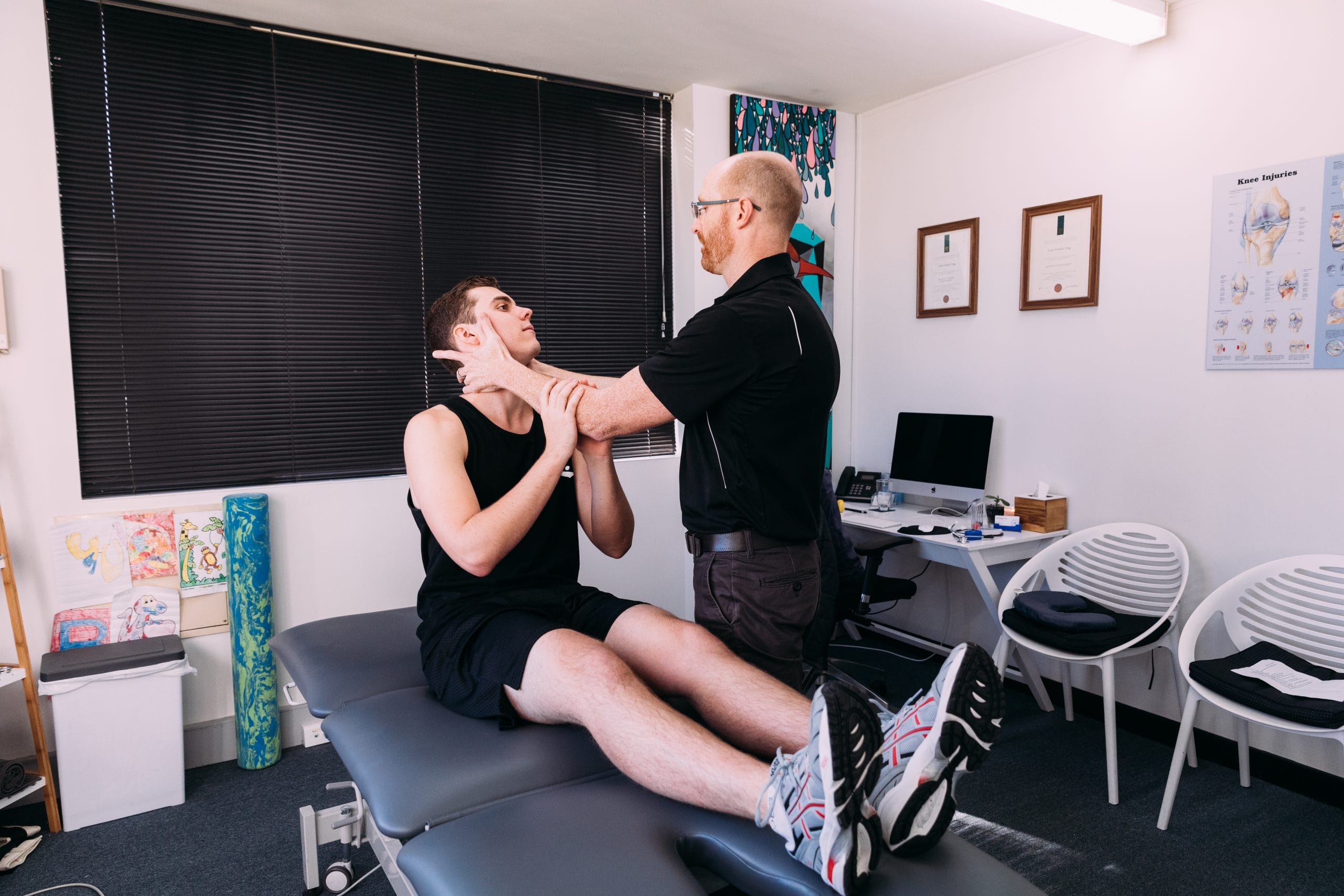
When it comes to physiotherapy and recovery from injury, there are two schools of thought on the most effective form of therapy. Some physical therapists take a more ‘hands on’ approach with manual therapy, using their hands to assess the injury and manipulate the joints and muscles to provide pain relief and treatment.
Alternatively, therapeutic exercise takes a ‘hands off’ approach to therapy. This form of therapy involves an exercise program tailored to the needs of the patient, getting them more involved in their recovery.
Injury or chronic pain can be debilitating and severely affect the day to day life of a sufferer. Physical therapy is an effective form of treatment for many different types of injury or chronic pain, from shoulder pain, neck disability, other non-specific chronic neck pain, knee injury and muscle strains. Physical therapy can be used to diagnose the issue and create a recovery or pain management plan. But which form of therapy is better?
Let’s take a look at manual therapy vs therapeutic exercise.
What Is Manual Therapy?

Manual therapy takes a ‘hands on’ approach to physiotherapy. It’s a physical treatment which can include manipulation and mobilisation of joints, soft tissue therapy and manipulation of muscles. With manual therapy, the physical therapist doesn’t use machines, only their hands. It’s a clinical approach to decrease pain and improve mobility in muscles, joints, tendons and soft tissue.
Manual therapy can be very effective in assessing the condition of a patient. It can also be an effective form of treatment for injury, covering a wide range of symptoms and conditions requiring attention. Through manual therapy and a ‘hands on’ approach, a physical therapist is able to identify the cause of pain and work on treating it.
What Is Therapeutic Exercise?

Therapeutic exercise is a form of physical therapy which incorporates strengthening, stretching and mobility exercises designed specifically to suit the needs of a patient on their recovery from injury. Therapeutic exercise is a ‘hands off’ approach, whereby a patient is given an exercise program to help them on their way to recovery. This may include the use of rehabilitation exercise machines or just their own body.
Therapeutic exercise therapy focuses on both strengthening and stretching movements. This will assist in strengthening the muscles around your injury as well as the injured area itself, and work on stretching the muscles to avoid re-injury.
Benefits Of Physical Therapy
Through studies, both manual therapy and therapeutic exercise therapy have been shown to lead to positive outcomes for their patients when used correctly, which is why both are actively used today. Some of the benefits of each form of physical therapy include:
Manual Therapy Benefits
- Increased mobility and range of motion in joints
- Improved tissue repair
- Reduced inflammation
- Reduced muscle tension
- Reduced pain intensity
- Improved circulation
- Less dependence on medication by finding the root cause of the pain and treating it, rather than masking the pain with medication
- Facilitate movement
- Some immediate pain relief
Therapeutic Exercise Therapy Benefits
- Allows the patient to take more control of their recovery and maintain progress, which can lead to a good outcome
- Increased fitness and overall wellness
- Improved strength and balance
- Improved mood and energy
- Improved coordination
- Improved circulation
- Reduced risk of reinjury
- Reduced pain intensity
- Less dependence on medication by finding the root cause of the pain and treating it, rather than masking the pain with medication
Manual Therapy And Therapeutic Exercise Therapy Combined Treatment

It doesn’t have to be one or the other. The best course of physical therapy treatment for you largely depends on your injury, your pain intensity and your situation. However, as a general rule, a good balance of both manual therapy and therapeutic exercise can be an effective treatment plan.
Manual therapy is great for assessing inflammation and getting to the root cause of the pain. It can also help to loosen tension in the affected area. This can act like a ‘warm up’, getting your body ready for therapeutic exercises. In this way, manual therapy and therapeutic exercise can work well hand-in-hand.
Both manual therapy and therapeutic exercise can be effective forms of physiotherapy. However, you want to ensure you know why certain methods of therapy are selected in your own case. Your physio will be more than happy to help you understand the ‘whys’ of your treatment plan, which will encourage you to keep up with the physical therapy and lead to a better outcome.
While manual therapy is important, it’s equally important that it’s effective for your situation, and completed by a trusted and qualified physiotherapist. There are some instances where manual therapy is unnecessary and therefore shouldn’t be used – and your physio will be happy to discuss this with you.
Depending on your injury or pain, combined treatment is likely a good option for you. To find out more about manual therapy vs therapeutic exercise therapy, or about using both as a combined treatment to create the best outcome for you, get in touch with our highly qualified team of local Como physical therapists here at Integrity Physio Perth.




